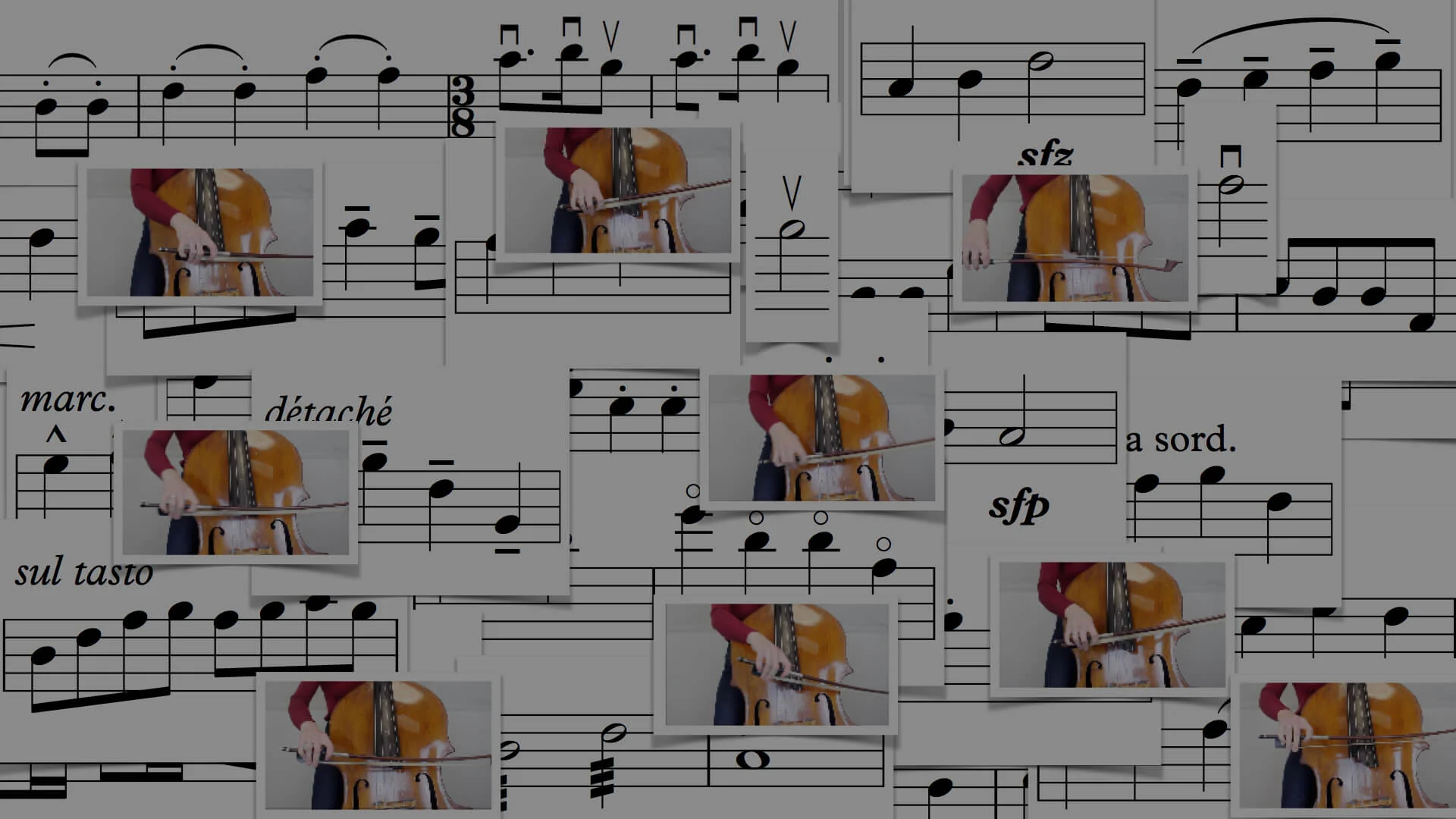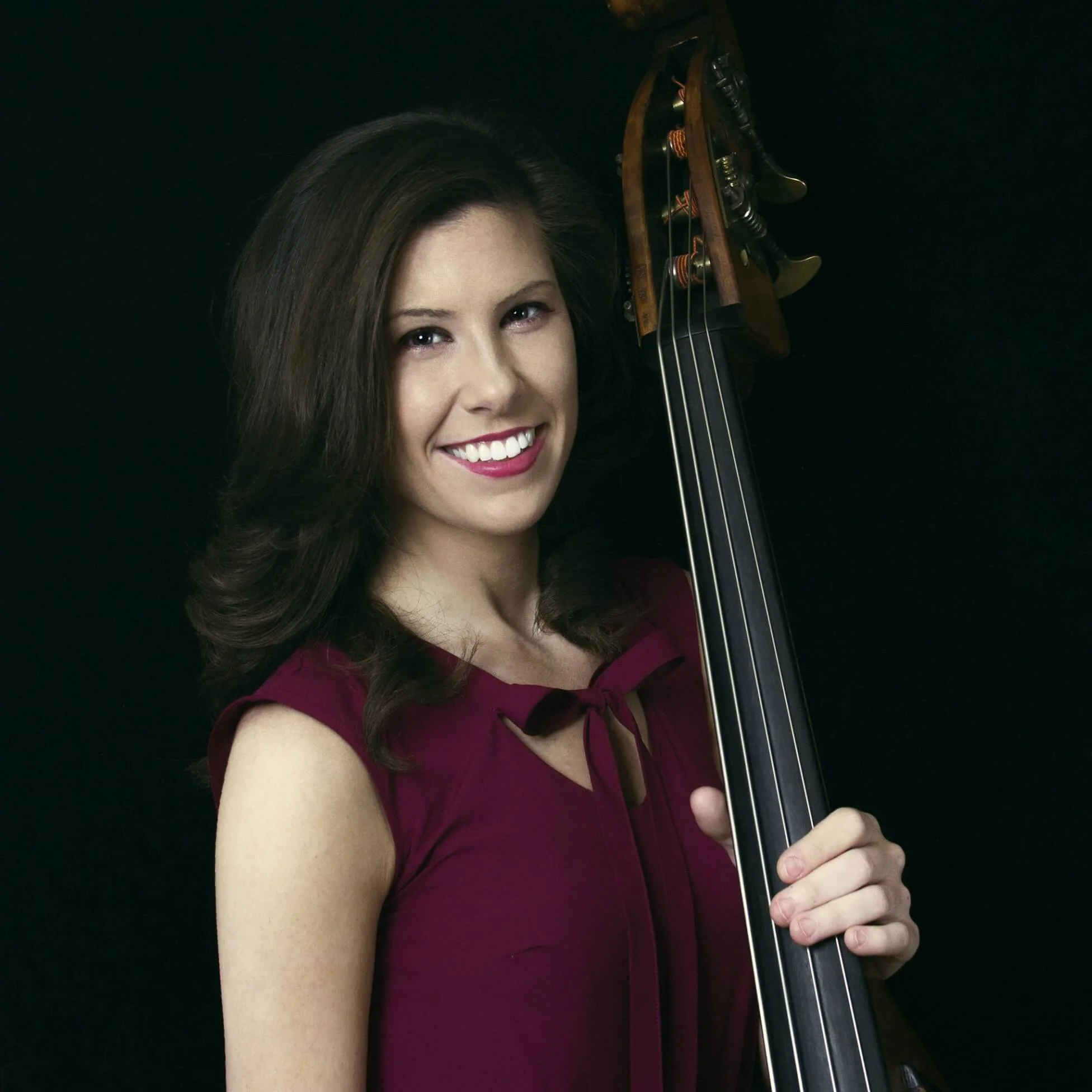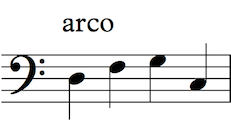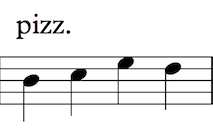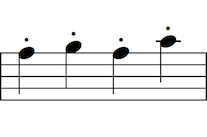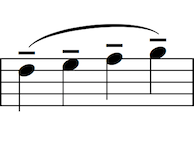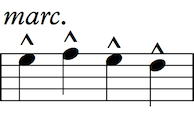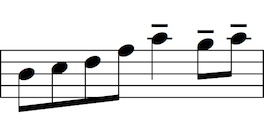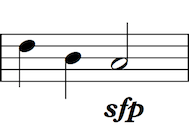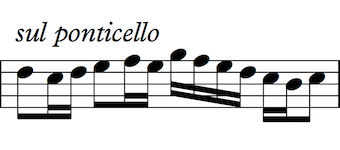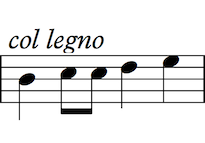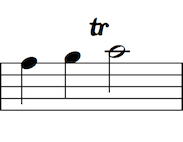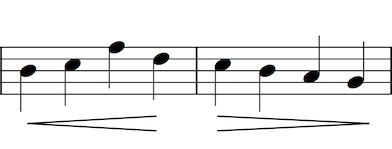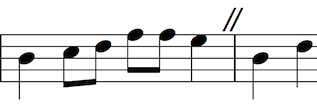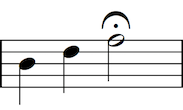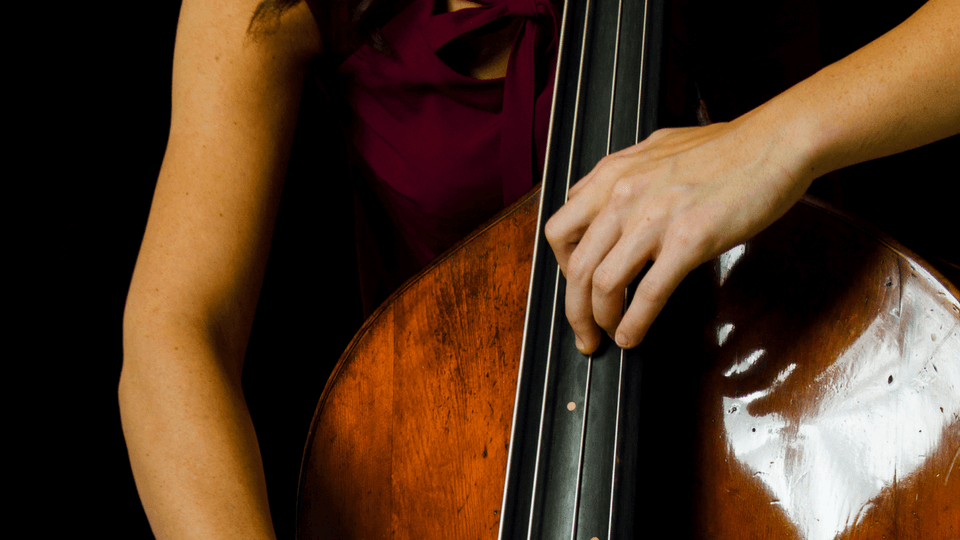The Definitive Guide to Articulations & Markings on the Double Bass
Includes video demonstrations, notated examples and written explanations.
Meet the Author
Lauren Pierce is a professional double bassist and educator. Her hugely popular YouTube channel features virtuosic performances of double bass solo repertoire.
Lauren is our classical double bass teacher & co-presenter of 'Ask Geoff & Lauren'. She has released numerous lessons and three step-by-step courses ‘Double Bass Bowing Technique’, 'Concepts of Solo Playing' & 'Double Bass Thumb Position'.
Introduction
Below is a list of some of the most common articulations and markings you will find in written music. For some of the articulations, I’ve included the equivalent vocal sounds - these are from Henry Portnoi’s book, “Creative Bass Technique,” which is a fantastic resource for orchestral playing and overall a great read by a legendary pedagogue.
The information below is intended to be used as a reference guide so I recommend bookmarking this page for later use. If you have a friend or student who you think would benefit from this information please share the page with them and help spread the word about what we are doing here at DiscoverDoubleBass.com.
If you would like to learn more about these articulations, as well as other bowing techniques, check out my step-by-step course, 'Double Bass Bowing Technique'. It's comprises 5+ hours of HD video across 70 lessons for beginners to advanced students.
Please note: The video demonstrations are not playing the specific notated examples.
Index/Quick Links
Articulations:
Written Symbols:
Articulations
Arco
- If you see the word “Arco” written in your music, it means to play the notes with the bow, instead of plucking them.
pizzicato
- Pizzicato means to pluck the strings with your fingers, as opposed to using the bow. The technique varies between different musical genres. To play a classical pizz, grab the string with your index finger and pull the string upwards, away from the fingerboard. For a jazz pizz, the string is pulled more to the side.
staccato
- Short or detached. When a dot is placed over a note, there should be a clear separation between that note and the following one. When dots are placed over a series of notes, there should be a clear space or break in between each one.
spiccato
- While staccato refers to a type of sound or shape of a note, spiccato is the bow stroke often used to achieve that sound. To play spiccato, the bow bounces off and back onto the string throughout a series of quick notes, making them short with a percussive quality.
-
This is one of the more notoriously tricky techniques in bowing, so I would recommend getting together with a teacher who can show you the intricacies of this stroke and how to do it properly.
-
Vocal sound = "Peter Piper".
Legato
- Legato indicates that the notes should be played more connected with no space in between. When playing this, you should aim for a sound similar to a slur, but played with separate bows.
Détaché
- “Detached”.
-
Non-legato, but with no accent at the beginning. To play detache, use an even amount of weight and speed throughout the stroke (to create an unaccented beginning), but with a distinct break in the sound between every note.
-
The vocal sound might sound like, “Dado”.
portato
- A combination of legato and détaché, this indicates that the notes should be played connected like legato, but with a more pronounced beginning like detache. Usually slurred, each note is re-articulated throughout a continuous bow.
-
When playing portato, be careful not to add space by stopping the bow in between each note. The bow should continue to move throughout, re-articulating each note by using more weight and a faster bow speed. It should sound like rounded and pulsing, not sharp like an accent.
-
The vocal sound for this might sound like, “ha ha ha”.
marcato
-
“Marked”.
-
This is a type of accent that indicates a noted to be played with more force. You should aim for an accent at the beginning of the note, but the notes should have no space in between.
-
To play this, begin by playing a series of legato notes - connected with no space in between. From there, add an accent at the beginning of each note by increasing the weight in your arm and speeding up the bow at the beginning of each note.
-
The vocal sound for this might sound like “tar tar tar”.
martelé
-
“Hammered”.
-
This is another type of accent, but with a sharper attack and more space between the notes. You might think of martelé as an aggressive form of staccato - short, but with a lot of force. The “hammer” sound comes from the sharp, aggressive accent at the beginning of the note but, unlike marcato, a series of martelé notes will have space in between each one.
-
The vocal sound for this might sound like “Cocoa”.
tenuto
-
"To hold".
-
Usually, this marking means to hold the note for its full value (or slightly longer, when taking time or pulling back the tempo), or to play the note slightly louder. Essentially, the tenuto marking means a note should have emphasis.
-
If the tenuto marking is written over a staccato dot, play with a space between the notes, or detached. In that instance, the marking is indicating length of the note.
-
If the tenuto marking is written over an accent, it is calling for emphasis on the accent. In this instance, it is indicating the dynamics of the note.
sforzando
-
“Suddenly with force”.
-
A sforzando is a type of accent that indicates a very sudden, sharp emphasis on one note. To play this type of accent, use an increased amount of weight, combined with a faster bow speed. This works best with a down bow because of the natural weight closer to the frog, but can also be done in an up bow.
-
The vocal sound for this would be, “K.”
Sforzando-Piano
-
A variation of sforzando (written sfzp or sfp), which is a sforzando accent immediately followed by a piano. This creates a sharp contrast in dynamics.
-
The beginning of the note will be played exactly as a sforzando would be played - with a large amount of weight and fast bow speed. Immediately after the accent sounds, lighten up the weight considerably and slow down the bow speed to play. This will create a sharp, loud accent at the very beginning of the note, followed by a very soft dynamic.
hooked bowings
-
Commonly used on dotted rhythm passages, hooked bowings help to play groups of notes short, but without accent. A slur marking is placed over two notes with dots over each note. This indicates to play the two notes in one bow direction, but with a space in between each one.
-
To play hooked bowings, stop the bow in between the two notes that are connected to create a small space.
Sul Ponticello
-
This means to play with the bow close to the bridge. The sound produced is thin and tinny, and allows the higher harmonics to be brought out. Common examples of Sul Ponticello are in Francois Rabbath’s “Poucha Dass” and Bela Bartok’s Roumanian Folk Dances.
-
To play this technique, move your bow as close to the bridge as possible while still able to get some pitch. If the bow moves too close or on top of the bridge, very little sound will be produced. As you play, use a free bow speed (not too slow) and not too much weight.
Sul Tasto
-
The opposite of Sul Ponticello, this means to play with the bow above the fingerboard. This creates a glassy, airy tone quality with a soft dynamic level. To prevent the string from crunching underneath the bow, use a light amount of weight with a fairly quick bow speed.
Col Legno
-
Flip the bow over so that the stick is on top of the string. To play the notes written, tap the stick of the bow against the string. This creates a soft, percussive sound. The most common example of this technique is in “Mars” from Holst’s “The Planets.”
Tremolo
-
This is an effect caused by quick bowing on a single note. The rapid re-articulations create a shaking or trembling sound.
-
The trick to playing tremolo is to use as little bow as possible. If you use too much bow, even when the dynamic is marked as forte, you won’t be able to move as quickly. This technique works best if you stay away from the frog and move closer to the center or tip of the bow.
Trill
-
A trill is an ornament that calls for a quick alternation between two pitches. In context, “tr” will usually be written above a note, sometimes with a wavy line following. The two notes in the trill consist of the note written and the pitch directly above it.
-
Unless otherwise indicated, the pitch will be the in the given key signature, making it a diatonic trill. If there is an accidental over the trill, it is called a chromatic trill. For example, if there was a trill over the note G in the key of C major, a diatonic trill would use the notes G and A. A chromatic trill might use Ab or A#.
-
Depending on the time period of the music written, the trill will either start with the note written (the lower note) or the note above. Trills begin on the written (or lower note) in music written during the Romantic Era and later (example 1 in video below), while trills in music written during the Classical Period and earlier are played starting on the upper note (example 2 in video below).
Con sordino, con sord
-
“With mute”.
-
This indicates the musician should put their mute on the bridge. This created a softer, fuzzier, and generally more muted tone quality.
-
Alternatively, “senza sord” means to remove the mute.
Written Symbols
slur
-
Play two or more notes within the same bow without re-articulating or changing bow direction. This creates a smooth, legato sound with no break in between the notes.
-
Vocal sound = “minimum”.
down bow/up bow
-
Down bow is notated by a symbol that looks like a square with the bottom missing. This means to move the frog from left to right.
-
Up bow is notated by a symbol that looks like an uppercase V. This is the opposite direction of down bow, where the frog moves from right to left.
Lift/Retake
-
Lift the bow off of the string and return it to the starting point. This is used when you need to play 2 down bows right after each other, but a slur or a hooked bowing isn’t appropriate.
Crescendo
-
Get louder or increase the dynamic level.
decrescendo
-
Get softer or decrease the dynamic level.
Harmonics
-
The string can be divided into intervals - 1/2, 1/4, 1/8, etc. At each of these points is a node where, when touched on a vibrating string, will produce a harmonic overtone. The most common harmonics are the octave harmonic of each string, an octave and a 5th above the open string (on the G string, this would be the D harmonic above the octave G), and the 2nd octave harmonic (2 octaves above the open string). Outlined below are some of the more common harmonics.
-
Some harmonics are the same pitch as the note when pressed down, like the octave G harmonic. These are notated like a regular note would be, but with a circle above the note to indicate it should be played as a harmonic.
-
Some harmonics produce different pitches than when the note is stopped. An example would be the A on the D string (see chart below). The note that sounds is an A, but an octave above the A when stopped. These are notated with an open diamond to indicate not only that the note should be played as a harmonic, but also that the pitch will be different than the stopped note on the fingerboard.
-
To play a harmonic, touch the string with one finger without pressing down. Make sure only one finger is touching the string - otherwise, the harmonic won’t sound properly. To get a clear sound, move your bow closer to the bridge and use a fast bow speed.
Caesura
-
Full stop in the music. Stop playing, then wait for either the conductor or ensemble leader to resume the music.
Fermata
-
Indicates the note should be held longer than the written duration. The prolonged duration is not exact and is up to the discretion of the performer or ensemble director. However, it is common to hold a note with a fermata for about twice as long.
repeat sign
-
This means to go back to the last double bar or inside repeat symbol (see below) and play the passage again. Unless otherwise specified, a section with a repeat is played twice all the way through.
I hope you have found this page useful. If you have please share it with another bassist and help spread the word about what we are doing here at Discover Double bass.
If you want to learn more with me check out my step-by-step courses 'Double Bowing Technique' and 'Double Bass Thumb Position'.
Double Bass Bowing Technique
- A step-by-step video course to master the French bow. 70 lessons, 5+ hrs.
Double Bass Thumb Position
47 Lessons, 4+hrs.
Thanks for checking this out! - Lauren Pierce

